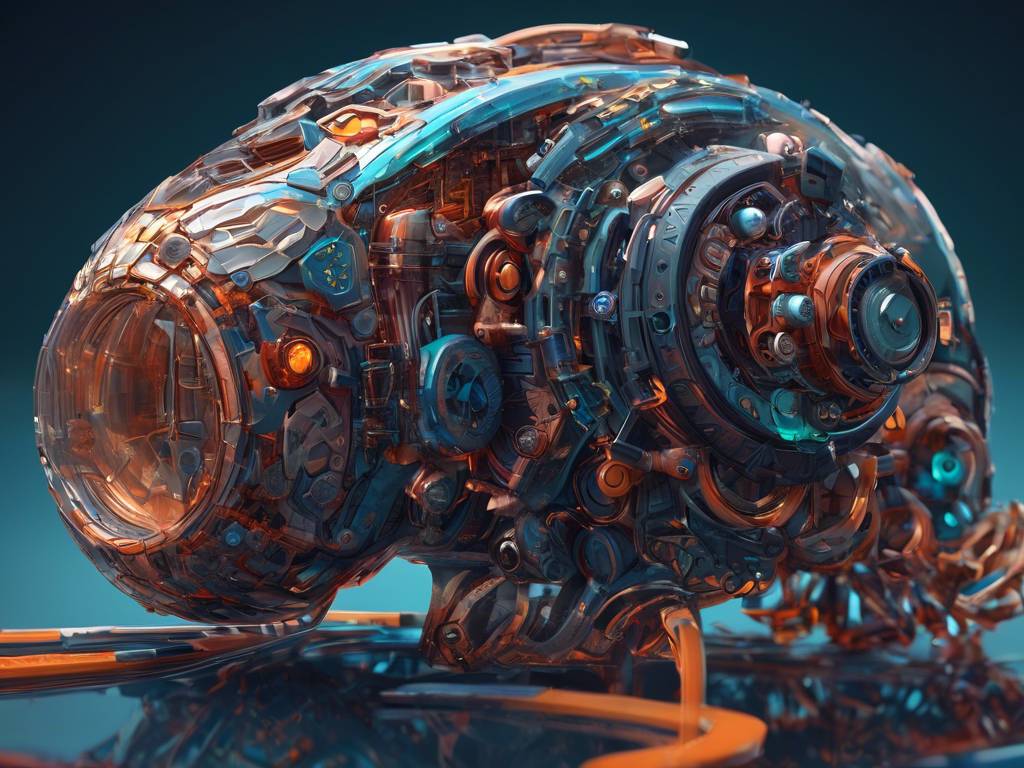Generative AI Art: The Fusion of Tradition and Technology
Generative AI art is revolutionizing the world of design, according to Ismail Tazisaoud, the founder of TRAME design studio. By combining cutting-edge artificial intelligence with traditional craftsmanship, TRAME is creating a new movement in contemporary art. Recently, the studio showcased its “Generative Interiors” concept in Paris, where it displayed pieces that seamlessly blended digital design with traditional crafts.
Tazisaoud explained that the goal was to allow people to envision these unique art pieces in their own homes. TRAME’s vision for the future of interior design was brought to life through its Craft Nouveau collections, featuring designers Martin Grasser, Jeff Davis, Alexis André, and Aranda\Lasch. Each designer utilized generative art tools to create bespoke designs that incorporated their respective traditional crafts practices.
Marrying Physicality with Digital Innovation
TRAME’s approach to generative AI art involves starting from a physical standpoint and then integrating digital elements. By informing the code with the physical constraints of traditional crafts, artists are able to push the boundaries of both mediums. The process begins with artists expressing themselves physically and digitally, crafting a code that represents their desired artistic outcome. Through this fusion of physical craftsmanship and generative AI tools, millions of unique outputs are generated.
Tazisaoud emphasized that craftsmanship plays a crucial role in this process. After curating the generated outputs, artists hand-craft the designs into finished products. This interaction between artists and generative AI technology sparks a conversation and facilitates innovation within both realms.
The Power of Collaboration
To bring their designs to life, TRAME’s artists collaborated with skilled craftsmen from various centers of craft. For example:
- Alexis André worked with cane weavers in Aubusson, a French village known for its six-century-old cane weaving tradition.
- Jeff Davis collaborated with Atelier Loire, a stained glass workshop that has restored windows in iconic cathedrals such as Notre-Dame and Chartres.
By tapping into the expertise of these craftsmen, TRAME further bridges the gap between traditional craftsmanship and generative AI art.
The Future of Interior Design
Tazisaoud believes that generative design has the potential to revolutionize the creation of collections. In the future:
- Design houses can effortlessly produce collections consisting of unique pieces.
- Generative AI technology will enable mass production of bespoke designs at a scale previously unimaginable.
This shift opens up opportunities for traditional design houses to offer one-of-a-kind pieces to a wider market. Tazisaoud envisions a future where even retailers like IKEA could provide a series of a million unique posters from the same collection at an affordable price.
Hot Take: Generative AI Art Redefining Interior Design
Generative AI art represents the convergence of tradition and innovation. TRAME’s “Generative Interiors” concept showcases how this fusion can transform interior design. By harnessing the power of generative AI tools and combining them with traditional craftsmanship, TRAME is pushing the boundaries of art and design.
This movement has the potential to democratize bespoke design, making it accessible to a broader audience. As generative art gains momentum, we can expect to see more initiatives that blur the line between physical and digital creativity.
Are you ready to embrace this new era of interior design?





 By
By
 By
By

 By
By
 By
By
 By
By